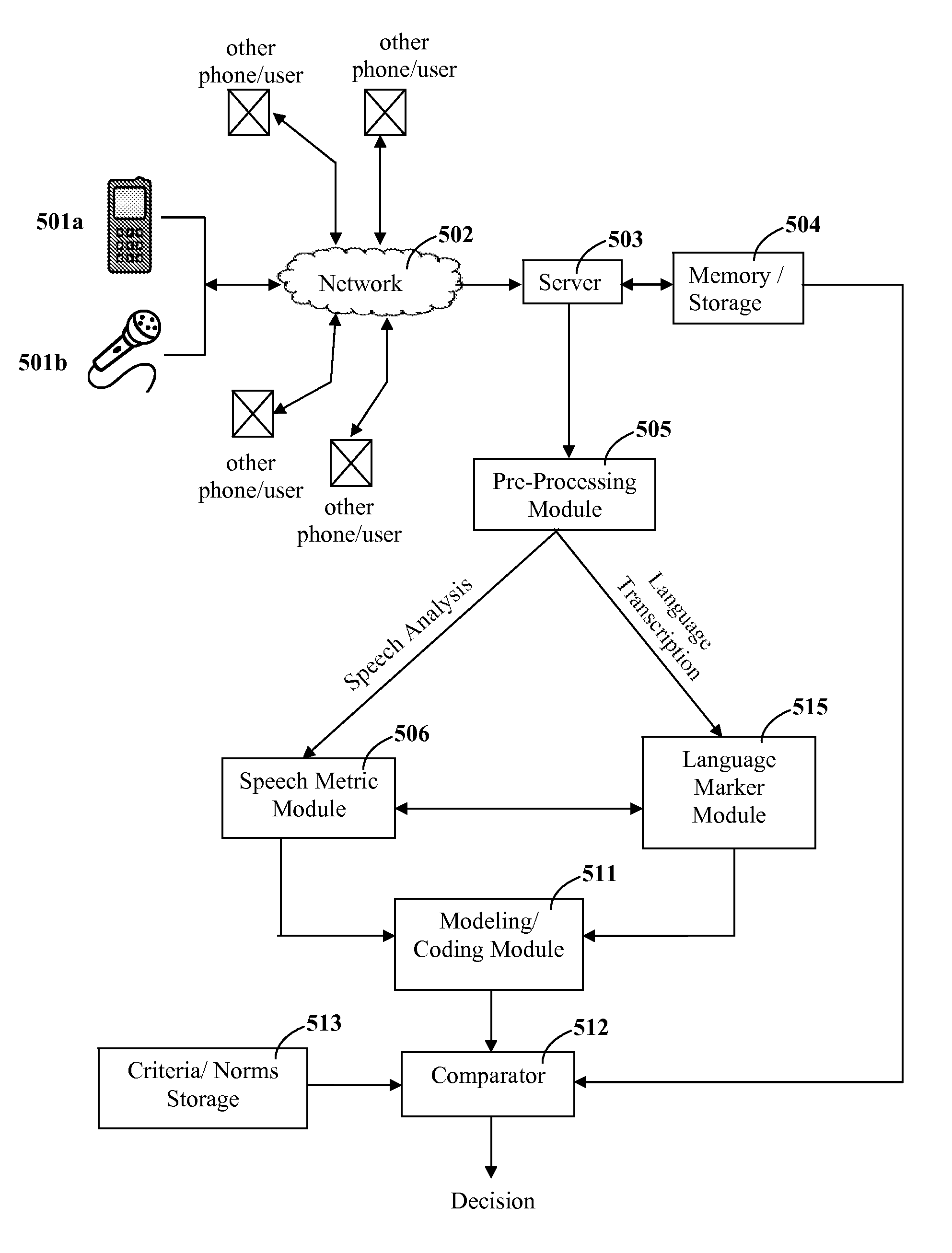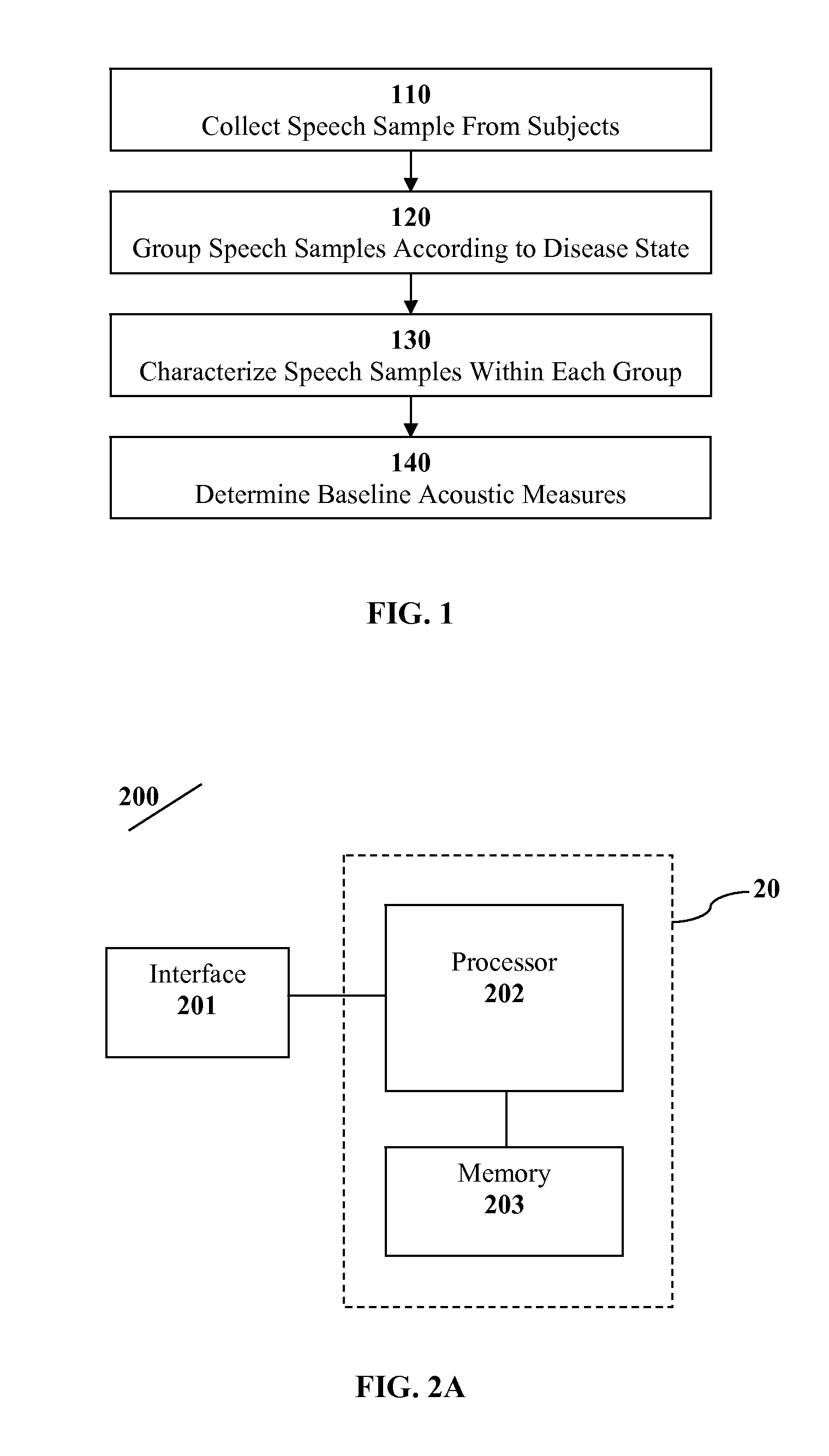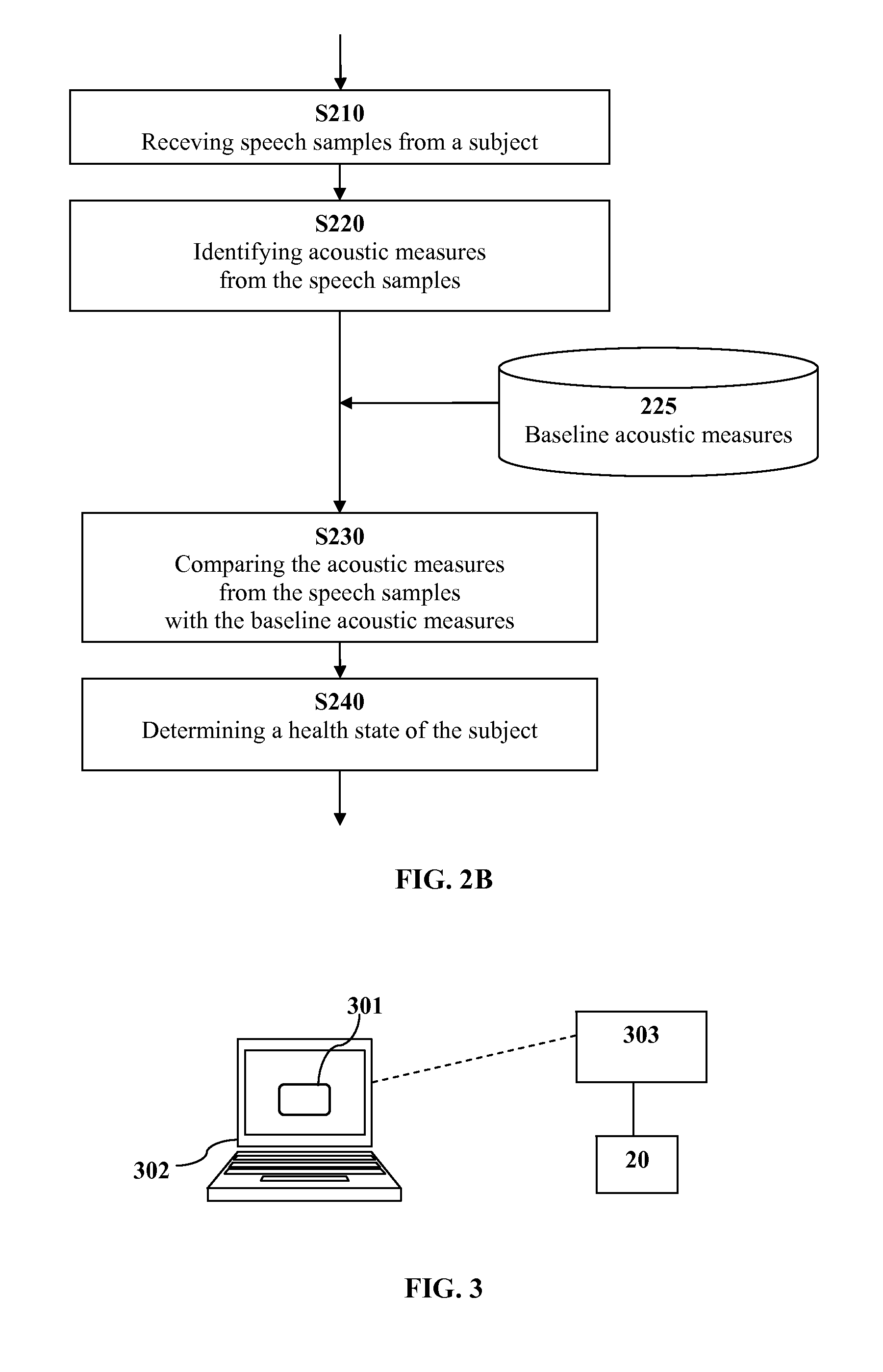Screening for neurological disease using speech articulation characteristics
a technology of speech articulation and neurological disease, applied in the field of neurological disease screening using speech articulation characteristics, can solve the problems of limiting the acceptance or routine use of these tests, nausea, vomiting, coughing, etc., and achieves the effects of reducing the frequency of speech articulation, and improving the quality of speech articulation
- Summary
- Abstract
- Description
- Claims
- Application Information
AI Technical Summary
Benefits of technology
Problems solved by technology
Method used
Image
Examples
example 1
Acoustic Detection of Parkinson's Disease Using Human Factor Cepstral Coefficients
[0107]Articulation is a detectable speech factor affected by neurological and other diseases, for example, PD. The expression of articulation errors in a diseased state reflect the mechanisms associated with articulation and the degree of coordination and control required for normal articulation.
[0108]In an embodiment of the present invention, articulation characteristics are measured using the standard deviation sum of cepstral coefficients and delta coefficients extracted from speech. In accordance with embodiments of the invention, human factor cepstral coefficients (HFCC), which are a variation of mel frequency cepstral coefficients (MFCCs), are used to represent the acoustics of the vocal track. Based on the correlation between the speaker's disease state and its effect on these parameters, the likelihood of the speaker having or developing a disease can be determined. In addition, these parameter...
PUM
 Login to View More
Login to View More Abstract
Description
Claims
Application Information
 Login to View More
Login to View More - R&D
- Intellectual Property
- Life Sciences
- Materials
- Tech Scout
- Unparalleled Data Quality
- Higher Quality Content
- 60% Fewer Hallucinations
Browse by: Latest US Patents, China's latest patents, Technical Efficacy Thesaurus, Application Domain, Technology Topic, Popular Technical Reports.
© 2025 PatSnap. All rights reserved.Legal|Privacy policy|Modern Slavery Act Transparency Statement|Sitemap|About US| Contact US: help@patsnap.com



